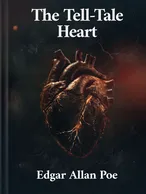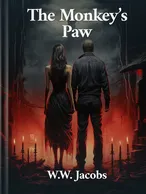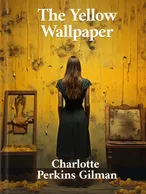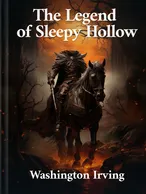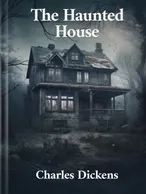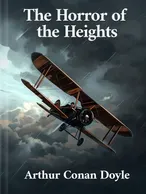Exploring the Horror Genre. Iconic Short Stories and Their Unique Styles
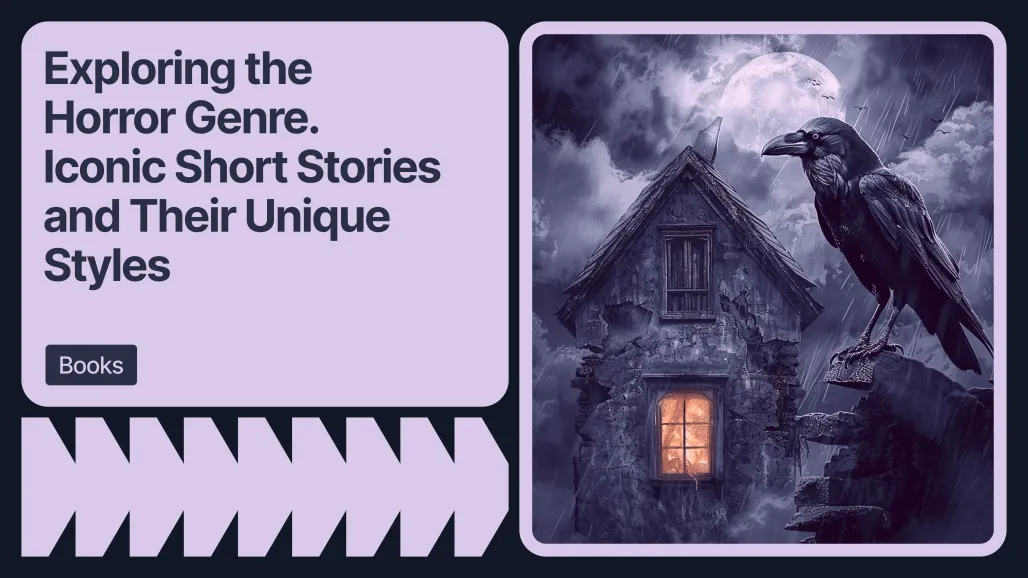
Explore iconic horror short stories and how each author — Poe, Lovecraft, Dickens, and more — uses language to craft fear and suspense.
“The Tell-Tale Heart” by Edgar Allan Poe
“The Monkey's Paw” by W.W. Jacobs
“The Yellow Wallpaper” by Charlotte Perkins Gilman
“The Legend of Sleepy Hollow” by Washington Irving
“The Dunwich Horror” by H.P. Lovecraft
“The Signal-Man” by Charles Dickens
“The Horror of the Heights” by Arthur Conan Doyle
Conclusion: The Many Faces of Fear
Horror fiction has existed in various forms for centuries, evolving from folklore and gothic tales into the psychological and supernatural horror we know today. It is a genre that thrives on fear—whether through the unseen terror lurking in the shadows, the madness that overtakes the mind, or the cosmic unknown that defies human comprehension.
The history of horror literature dates back to ancient myths and medieval ghost stories, but it was in the 18th and 19th centuries that horror began to take shape as a distinct literary tradition. Gothic horror emerged in Britain with novels like The Castle of Otranto by Horace Walpole and Frankenstein by Mary Shelley. Meanwhile, in America, Edgar Allan Poe pioneered psychological horror, exploring themes of guilt, obsession, and insanity.
Each country has shaped horror fiction in its own way:
- British horror often leans on the gothic tradition, featuring haunted castles, ghostly apparitions, and themes of madness (The Legend of Sleepy Hollow carries these influences).
- American horror emphasizes psychological terror and personal descent into insanity, as seen in Poe’s works.
- Lovecraftian horror, largely born in the U.S., deals with cosmic dread—the idea that the universe is vast, uncaring, and full of incomprehensible horrors.
- European horror, especially from France and Germany, often incorporates folklore and the supernatural in a fatalistic way.
- Victorian horror, like The Monkey’s Paw, explores moral consequences and supernatural irony.
Below are some of the most chilling short stories in horror literature, each demonstrating a unique approach to fear.
“The Tell-Tale Heart” by Edgar Allan Poe
Synopsis:
A narrator insists on their sanity while describing the meticulous murder of an old man, driven by an irrational fixation on the man's vulture-like eye. As the police investigate, the narrator’s overwhelming guilt manifests as the imagined sound of the victim's still-beating heart.
Stylistic Nuance:
Poe’s use of first-person unreliable narration plunges the reader into the unstable mind of the protagonist. His sentences are often short, abrupt, and fragmented, mimicking the narrator's quickening pulse and mental deterioration.
- Alliteration and repetition are key techniques: phrases like “very, very dreadfully nervous I had been and am” intensify the character's obsession.
- Onomatopoeia brings the horror to life: the constant “beating of the hideous heart” grows louder in the narrator’s mind, reinforcing his paranoia.
- Poe’s punctuation—dashes and exclamation points—mirror rising hysteria, making the reader feel the narrator’s panic.
“The Monkey's Paw” by W.W. Jacobs
Synopsis:
The White family comes into possession of a mystical monkey's paw that grants three wishes. Despite warnings of its dangerous powers, they make wishes that lead to unforeseen and tragic consequences.
Stylistic Nuance:
Jacobs employs a slow-building sense of dread, making horror emerge gradually rather than through sudden shocks.
- Foreshadowing plays a major role: the early dialogue about how the paw grants wishes with dire consequences sets an ominous tone.
- Symbolism is powerful: the monkey’s paw itself represents temptation and fate, reinforcing the story’s warning against meddling with destiny.
- Short, tense sentences during climactic moments—such as when the family hears knocking on the door—heighten fear and anticipation.
“The Yellow Wallpaper” by Charlotte Perkins Gilman
Synopsis:
A woman undergoing treatment for “nervous depression” is confined to a room with peculiar yellow wallpaper. As she spends more time isolated, she becomes obsessed with the wallpaper’s patterns, leading to a descent into psychosis.
Stylistic Nuance:
Gilman’s use of first-person diary entries creates an intensely personal and claustrophobic atmosphere.
- Repetition and short sentences mimic obsession: The narrator’s repeated references to “the yellow” and “the pattern” reflect her growing fixation.
- Symbolism: The wallpaper represents the constraints imposed on women by society and medicine. The protagonist's attempts to “free” the woman trapped within mirror her own mental collapse.
- Gradual sentence fragmentation: As the narrator spirals into madness, her language becomes more erratic, making the reader feel her mental deterioration firsthand.
“The Legend of Sleepy Hollow” by Washington Irving
Synopsis:
Ichabod Crane, a superstitious schoolteacher, competes for the affection of Katrina Van Tassel in the quaint village of Sleepy Hollow. His encounter with the legendary Headless Horseman becomes a pivotal and terrifying experience.
Stylistic Nuance:
Irving’s writing blends folklore with gothic horror, using rich, atmospheric description to immerse the reader in the eerie setting.
- Personification of the landscape gives the setting a ghostly presence: trees “whisper” and shadows “lurk.”
- Irony and humor soften the horror, lulling the reader into a false sense of security before the supernatural climax.
- Rich, flowing sentences create an immersive, dreamy feel, making the final chase sequence even more startling.
“The Dunwich Horror” by H.P. Lovecraft
Synopsis:
In the rural town of Dunwich, Massachusetts, the Whateley family becomes entangled with dark, otherworldly forces. The peculiar and rapid growth of Wilbur Whateley, along with mysterious occurrences, leads to a confrontation with an unseen terror that threatens the town.
Stylistic Nuance:
Lovecraft’s horror is distinct in its reliance on cosmic dread, the idea that the universe is vast, indifferent, and full of incomprehensible horrors. His writing style fosters a sense of esoteric mystery, sensory overload, and inevitability, making his terror feel limitless.
- Dense, archaic language: Lovecraft’s elaborate, old-fashioned prose gives the sense that the reader is uncovering an ancient and terrifying truth. Words like eldritch, unspeakable, and unnameable are frequently used to suggest horrors beyond human comprehension.
- Vague, yet evocative descriptions: Rather than fully describing monsters, Lovecraft often hints at their forms, making them more terrifying in the reader’s imagination (“It was the utter, objective embodiment of the fantastic novelist’s ‘thing that should not be.’”).
- Use of multiple perspectives: Through a mix of first-hand accounts, academic reports, and eyewitness testimonies, Lovecraft creates an atmosphere of pseudo-realism, making the story feel like a documented event rather than fiction.
- Fear of the unknown: Lovecraft’s horror often stems from the realization that humanity is insignificant in the face of ancient, cosmic entities—forces so vast and incomprehensible that encountering them can drive a person to madness.
Lovecraft’s horror is not just about fear but about existential insignificance—a chilling reminder that there are forces in the universe that we are not meant to understand.
“The Signal-Man” by Charles Dickens
Synopsis:
A railway signalman is haunted by a spectral figure that appears near the tunnel entrance, each appearance forewarning a tragic event on the line. The narrator, upon hearing the signalman's tale, becomes entwined in the eerie premonitions.
Stylistic Nuance:
Dickens’ horror emerges through subtle psychological tension rather than overt supernatural scares.
- Repetition creates a sense of doom: the phrase “Halloa! Below there!” echoes throughout the story, reinforcing the signalman’s growing paranoia.
- Dialogue-driven narration enhances realism, grounding the supernatural elements in everyday speech.
- Use of light and dark imagery—the deep blackness of the railway tunnel vs. the light of the signal box—symbolizes knowledge vs. the unknown.
“The Horror of the Heights” by Arthur Conan Doyle
Synopsis:
A pilot documents his terrifying experiences flying at high altitudes, where he encounters monstrous, otherworldly creatures living in the upper atmosphere.
Stylistic Nuance:
Doyle’s horror relies on scientific realism mixed with cosmic horror, making the supernatural feel plausible.
- Detailed, journal-style narration mimics a real aviation log, giving credibility to the fantastical events.
- Gradual tension-building: The pilot’s observations start as mundane but become increasingly disturbing, drawing the reader into his growing terror.
- Suspenseful pacing: The final, frantic entries create a sense of urgency as the protagonist realizes the horror he has uncovered.
Conclusion: The Many Faces of Fear
Each of these horror stories showcases different literary techniques that shape fear in unique ways:
- Poe’s obsession with syntax and rhythm enhances psychological horror.
- Jacobs' use of foreshadowing and pacing crafts a cautionary tale of fate.
- Gilman’s fragmented sentences reflect a mind unraveling under oppression.
- Lovecraft creates cosmic horror, with the help of dense, archaic language and vague descriptions.
- Irving and Dickens rely on setting and repetition to build suspense.
- Doyle combines scientific speculation with mounting dread.
Horror literature continues to evolve, yet the fundamental techniques of sentence structure, word choice, and symbolism remain powerful tools for evoking fear. Whether through madness, ghosts, fate, or cosmic terror, these timeless stories remind us that true horror often lurks in the unseen and the unknown.
Which of these horror classics have you read? Which stylistic approach to fear do you find most chilling?
